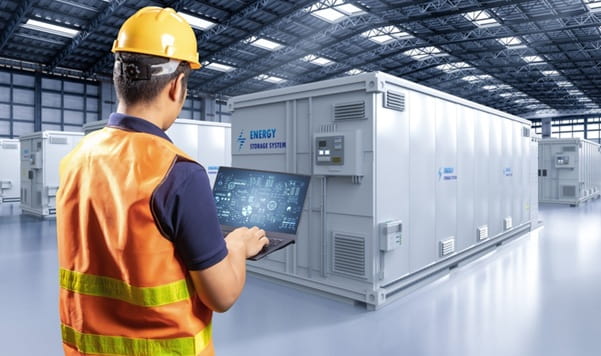The conversation on renewable energy in India is shifting quickly. Solar power and wind turbines are taking all the limelight, but there’s a question that often comes up in discussions – how do we store so much clean power we produce? That’s where power storage systems step in. They aren’t just a technical add-on anymore; they’re a necessity if we want to truly shift toward sustainable energy use that works round the clock.
Across homes, communities, and large-scale grids, storing energy is becoming just as important as producing it. The rise of renewable energy has created a fresh challenge: it doesn’t always show up when you need it most. Solar power peaks in the afternoon, but your home might need it more in the evening. The wind doesn’t always blow when the demand is high. Storage bridges that gap and makes renewable energy reliable.

In this post, let’s try to understand what India is doing to make power storage more common, and why now is the time to pay attention to it.
Why is Energy Storage Gaining Attention in India?
For any country trying to shift to cleaner energy, storage is not optional anymore. In India, where the push for renewables has been strong over the last few years, there’s a growing need to manage the flow of electricity better. That means saving any extra power when available and using it when needed most.
The Indian power grid is large and complex. Some areas have too much electricity during certain hours, while others face shortages. Without storage, balancing this gets tricky. So, energy storage systems have started playing a bigger role not just in cities, but also in rural and industrial areas. They support electricity availability, reduce pressure on the grid, and even help avoid using diesel generators as a backup.
Several leading companies in the renewable sector, like Hero Future Energies, are actively working on storage-based solutions to make green power more flexible and dependable. Their aim is to support this shift in a way that fits the unique needs and challenges of the country.
Different Types of Storage Technologies Used Across India
India isn’t relying on just one kind of storage technology. Several approaches are being explored and used depending on the setting and the need. Battery systems are among the most visible ones. These can be found in small-scale rooftop setups and also in large utility projects. They’re quick to respond and can be placed almost anywhere, which makes them popular.
Other technologies are mechanical systems, in which energy is stored by displacing objects like water or air and then releasing that stored pressure when there is a need for electricity. There’s thermal storage, in which electricity is not used directly but heat is stored that will be used to generate usable energy later. All methods have their advantages, and the decision usually relies on location, space, and how the power will be utilised.
As storage technologies improve and become more affordable, a wider mix of these systems is expected to show up across residential areas, industries, and public infrastructure.
Why the Market is Growing So Quickly
A few years back, storage either remained optional or costly. That’s no longer the case. One of the reasons is the rise of renewables. As more solar and wind capacity is added annually, the grid requires superior tools to navigate its variability. Storage systems allow that by storing excess energy and releasing it back as required.
The other reason is the growing number of electric vehicles. With an increasing number of people moving to EVs, charging points and backup systems are also in demand. These cars themselves can also be included as part of the solution for storage. On top of that, government policies are starting to support energy storage more directly. Through incentives, tenders, and long-term goals, India is building a path for storage to grow alongside renewables.
There’s also more awareness among everyday users now. People are starting to see storage as a way to get better control over their electricity, reduce outages, and become less dependent on traditional grid supply.
What This Means for Individuals
Most of the discussions on storage are centered on grids, industries, and big energy projects. But for individuals, storage can be important, too. Whether it’s keeping your appliances operating during a power outage or holding excess solar power from your rooftop panels for evening use, having a means to store electricity puts you in more control and with more choice.
For individuals where power outages are common or grid supply isn’t always dependable, storage brings a level of reliability. Less downtime and interruption. And for individuals who are already employing the use of solar panels, it provides value through the ability to use stored energy later, rather than feeding all of it back into the grid.
The idea is that power storage systems are not necessarily about huge corporations or government initiatives. They can become an accessible aspect of everyday life for individuals, particularly as prices decline and technologies become more accessible.
Looking Ahead to What Comes Next
India’s energy future depends heavily on how well we manage this transition. Generation is one part of it, but storage is quickly becoming the other half of the story. There’s a growing belief that storage will become a key part of every new energy project going forward, just like how transmission lines or substations are standard today.
There are newer technologies in the pipeline as well. Engineers and developers are testing improved battery chemistries, more intelligent control systems, and even artificial intelligence that can sense when and how to utilise stored energy more effectively. This will improve storage systems’ reliability and potentially make them last longer.
Conclusion
The shift to clean energy won’t work unless we find better ways to store that energy. India is beginning to recognise this, and so are many individuals who are tired of power cuts or high energy bills. The role of power storage systems is growing rapidly because it solves real problems at home, at work, and on the national grid. If you’re someone who’s been paying attention to India’s energy journey, this is a space worth watching. Storage is not just a technical upgrade. It’s a building block for powering the future, one unit at a time.

